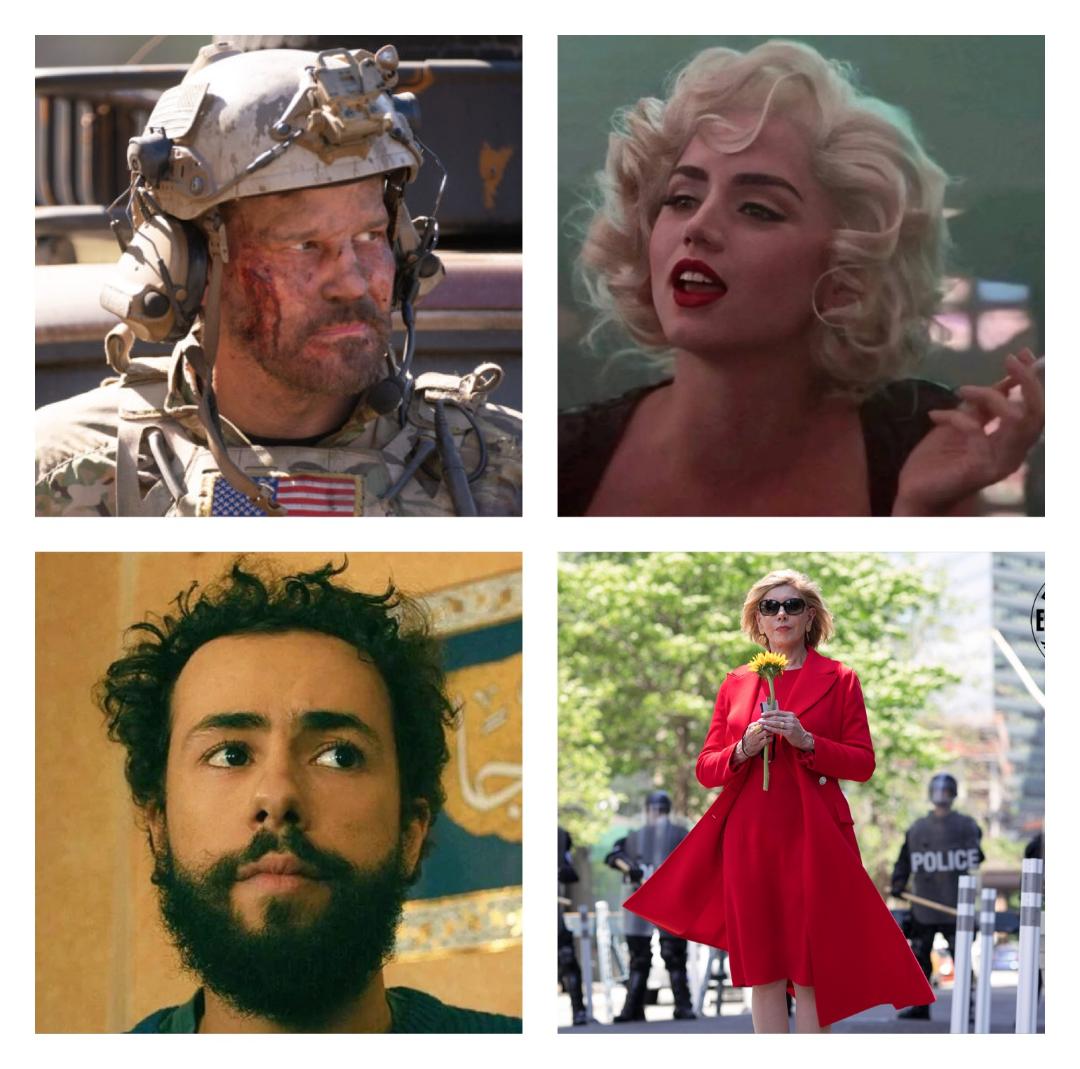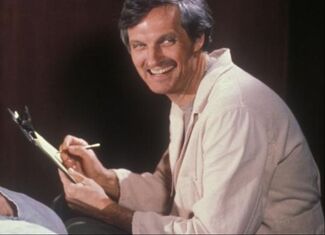 Photo: CBS Photo: CBS by Julian Spivey “M*A*S*H” is celebrating the 50th anniversary of its premiere on Saturday, Sept. 17 and there are many of my parents and their parents’ generation who were lucky enough to see one of the greatest television series of all-time live in its original run on CBS. I’m one of those who came to the show later on through the many re-runs in syndication. To this very day “M*A*S*H” can be found somewhere on your TV guide on a daily basis – one of only a handful of shows (“Gunsmoke” and “The Andy Griffith Show” two more I know of) that have likely been somewhere on television every day since their original runs ended. I was introduced to “M*A*S*H” when the Hallmark Channel became its exclusive home on cable TV in September of 2013, the week of my 16th birthday. I would get home from school in the afternoon and watch back-to-back episodes of the show five days a week. When you watch 10 episodes a week it doesn’t take long to make your way through a series, even one that aired more than 200 episodes. I’m the kind of pop culture fan who honestly believes the shows, movies, songs, etc. that I love have changed my life and played a role in the person I am today. I think “M*A*S*H” is one of these pop culture things that has formed whom I’ve become and done so for the better. Its morals and view of the world helped me become a compassionate, ethical being. I likely would’ve turned into one either way, but this show mixed with the other shows and films I loved around this time, and the music I grew to love in my teens and into my twenties helped me see it was the right way to live. Hawkeye Pierce is my favorite television character of all time. He’s very likely my favorite fictional character period. He always stood up for the little guy. He despised bigotry and racism. He hated violence, though it appeared everywhere around him. He showed what the best of humanity could look like. The performance by Alan Alda and the writing/creation from Larry Gelbart and others of the character in the TV series (which was truly different from its predecessor in the novel and film version) made a lasting impression on me at 16, much the same way listening to Bruce Springsteen and Johnny Cash had and would and the performances of everyman actors like James Stewart and Henry Fonda in classic films would. I began to seek out this kind of moralistic entertainment. I still do to this day nearly 20 years later. A lot has been made about the era of Peak TV and the proliferation of the anti-hero. Don’t get me wrong there are plenty of anti-heroes I’ve enjoyed watching both on television and in film, but there’s something about heroes – the old-fashioned kind – that just can’t be beaten. Hawkeye Pierce, though I know he’s a fictional man, is one of my heroes and has been since the moment I got to know him and his mostly heroic and moralistic cohorts on what I consider to be the greatest TV series ever.
0 Comments
by Aprille Hanson-Spivey & Julian Spivey September 17 marks the 50th anniversary of the premiere of "M*A*S*H," one of the greatest TV shows of all-time, on CBS. For 11 seasons the series that focused on doctors and nurses saving American soldiers at a medical hospital near the frontlines of the Korean War was among the most popular shows on television. To this day "M*A*S*H" can still be seen somewhere on your television programming guide, a testament to its lasting popularity and importance to the TV medium. In celebration of the milestone 50th anniversary of "M*A*S*H" we have ranked the characters of this classic TV series. 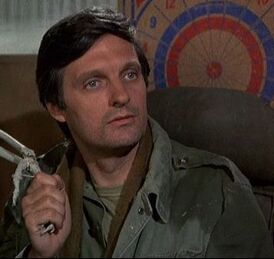 Photo: CBS Photo: CBS 1. Hawkeye Pierce (Alan Alda) Hawkeye Pierce is the heart and soul of “M*A*S*H.” He’s also the greatest character in television history. His strong moral code is truly the center of the show. You can count on Hawkeye to do what’s right – especially as the series goes on and his womanizing antics fall by the wayside. I’ve always appreciated how the show managed to show Hawkeye’s moral code, while also letting him be a total goofball. It’s a mixture you wouldn’t necessarily believe would work, but the show realized almost from the start it was one actor Alan Alda could bring out in the character. No comedy has ever provided so many laughs, while also making eyes well with tears as “M*A*S*H” did during its run and Hawkeye Pierce was the one delivering both of those in spades, often in the span of one 23-minute episode. JS 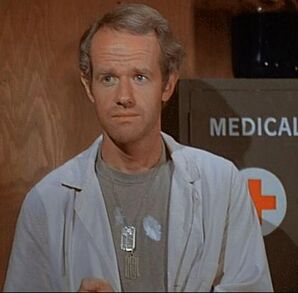 Photo: CBS Photo: CBS 2. B.J. Hunnicutt (Mike Farrell) Capt. B.J. Hunnicut had the tough task of replacing a beloved character in Capt. Trapper John McIntyre. This was right after fans already had to say goodbye to Col. Blake and get hit with the sad news he was killed. Then, top of season four, Hawkeye misses saying goodbye to his best friend Trapper after going on R&R. Instead, he’s greeted by B.J. in “Welcome to Korea.” It’s a credit to Farrell’s acting skills to slide into that role. In fact, his depth was always more than Trapper’s and their friendship was one of the best ever on TV. A devoted doctor, husband and father, he was a different kind of friend for Hawkeye, one he needed. One of the show’s classic episodes “Death Takes a Holiday” in season nine, shows him doing everything he can to save a soldier and ultimately changing his death time to make sure his children didn’t have to grow up knowing their father died on Christmas. AHS 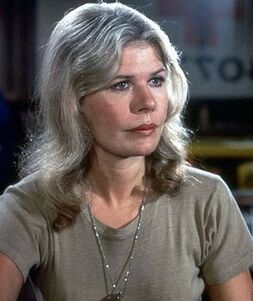 Photo: CBS Photo: CBS 3. Margaret Houlihan (Loretta Swit) Head nurse Maj. Margaret “Hot Lips” Houlihan could have easily been written as a stereotype – a blonde, bumbling nurse, the comic relief in a war zone. Even though Houlihan could be infuriating with her no-nonsense attitude and affair with Frank Burns – ew – her character was one of the most important on the show. She was a strong, smart woman, doing her part in the war effort and doing it well. While M*A*S*H premiered in 1972, a time when women were gaining more respect in the world, the show itself takes place in the early 1950s during the Korean War. Having “Hot Lips” written as a tough nurse rather than meek was a smart move by the writers. Her character evolved throughout the show, especially after Burns left. Her frenemy relationship with Hawkeye was one of the best on the show, particularly in the episode “Comrades in Arms: Part 1,” when the two kiss while trapped behind enemy lines. AHS 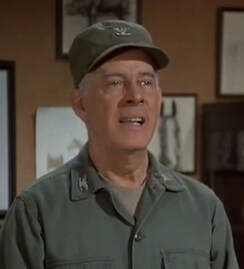 Photo: CBS Photo: CBS 4. Sherman T. Potter (Harry Morgan) Lt. Col. Sherman Potter had massive shoes to fill. As fans were left stunned by the death of beloved Lt. Col. Henry Blake in the final episode of season three “Abyssinia, Henry,” Col. Potter leads the unit in the second episode of season four, “Change of Command.” Potter marked the beginning of a new age of M*A*S*H, along with Capt. B.J. Hunnicutt. Potter never tried to be Blake – no one could replace him. So, the unit instead got an experienced war horse, who wound up having a heart and profound respect for his fellow comrades. Where Blake was more of a friend, Potter became a father figure to everyone and it was an important role to fill, especially for Hawkeye. He wound up being the glue that kept everyone sane, while also having a compassionate streak that was frankly unexpected. AHS 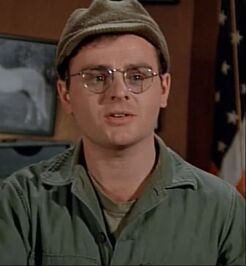 Photo: CBS Photo: CBS 5. Radar O'Reilly (Gary Burghoff) Cpl. Radar O’Reilly is one of the sweetest characters to ever grace television. His sweet demeanor represented a large portion of young men sent off to war that were completely naïve and really had no business in a war zone. Between caring for his rabbits to bringing along his teddy bear to Korea, Radar provided innocence in the backdrop of war. His most heartbreaking moment was without a doubt informing the unit while they are busy operating on the wounded that Col. Blake had died in a helicopter crash on his way home. It’s one of the most memorable moments in TV history, and Radar delivered the news with heart and bravery. AHS 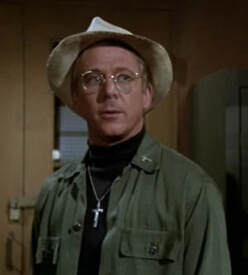 Photo: CBS Photo: CBS 6. Father Francis Mulcahy (William Christopher) Father Francis Mulcahy took on the role of the show’s moral compass. As the resident priest, he helped spiritually guide the Army doctors and nurses in a way that was never heavy-handed, knowing what kind of moral dilemmas they faced each day. His character was so important because he played a priest as a real person instead of a judgmental stereotype. He wasn’t afraid to be goofy, knowing they needed that break in the madness. But all the while, he sprinkled in bits of religious wisdom, like “Look on the bright side: When they tell us to serve our time in Purgatory, we can say, “No thanks, I've done mine.” AHS 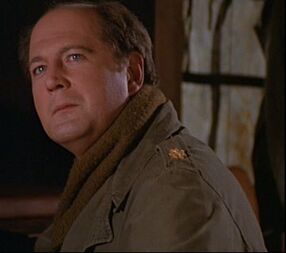 Photo: CBS Photo: CBS 7. Charles Emerson Winchester III (David Ogden Stiers) The addition of Charles Emerson Winchester III in season six of the series continued the show’s incredible knack for replacing original characters with even better characters (has any other show ever accomplished this with such success?) Winchester steps into the role as a foil for Hawkeye and B.J., but you never really hate him like you did Frank Burns. He’s pompous. He’s egotistical. He thinks he’s better than his peers. But he also finds a way to be lovable – probably because unlike Frank he’s able to match wits with Hawkeye and the others and he’s humane, intelligent and a skilled surgeon, qualities his predecessor lacked. He also wants to be anywhere other than Korea, like his comrades at the camp. In many ways, Charles Winchester is a TV antecedent to Frasier Crane. JS 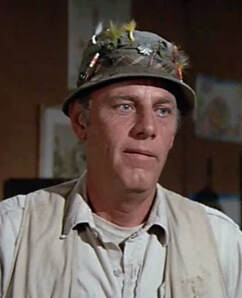 Photo: CBS Photo: CBS 8. Henry Blake (McLean Stevenson) Henry Blake may now be known more for the most devastating departure of a character in television history, especially for a comedy series, but let’s remember him at his best as the over-his-head, but friendly commander of the M*A*S*H Unit 4077. Blake knew he wasn’t much of a leader, he didn’t want to be in Korea any more than Hawkeye and Trapper, but he always had his people’s backs and gave us what might be the most memorable line in the show’s history when he says to a heartbroken Hawkeye, “All I know is what they taught me in command school. There are certain rules about a war, and rule number one is that young men die. And rule number two is doctors can’t change rule number one.” Actor McLean Stevenson’s decision to leave the show at the end of season three would also give us potentially the most memorable moment in the show’s legendary history. JS 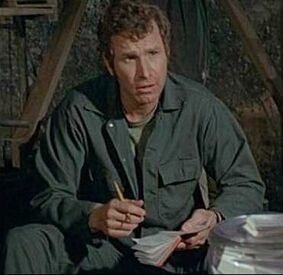 Photo: CBS Photo: CBS 9. Trapper John McIntyre (Wayne Rogers) If there was one character who kind of got the short shrift on “M*A*S*H” it was Trapper John McIntyre. When the series began in 1972 he was meant to be a co-lead with Hawkeye Pierce, as the character had been in Robert Altman’s 1970 film and Richard Hooker’s 1968 novel, but it didn’t take long for Trapper to become overshadowed by Hawkeye in the TV series, whether this was through the star-power of Alan Alda or being shortsighted by the writing staff. Wayne Rogers, believing the writers has made Trapper into nothing more than the straight man for Hawkeye, decided to leave the show abruptly after the third season. The show had no other means to write his character off than by saying he’d been discharged. JS 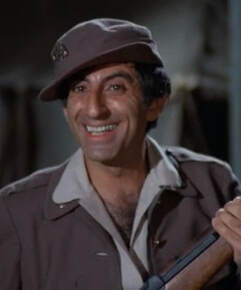 Photo: CBS Photo: CBS 10. Maxwell Klinger (Jamie Farr) Corporal Maxwell Klinger could wear a feathered boa better than anyone in the U.S. Army. The Lebanese American from Toledo, Ohio, had an important role in "M*A*S*H" as not only comic relief, but to show off the reality of how badly some wanted to get out of the military. His cross-dressing was a running joke – it may be viewed as problematic today, but let’s hope not – but it was also giving him a sense of control in an uncontrollable environment. He wanted out, and the only way out was to convince the higher-ups he was crazy. But his role was filled with hilarious one-liners and once Cpl. Radar O’Reilly left in season eight, Klinger ditched the dresses and filled that hole. Because of that, he wound up being a more versatile character than was probably ever intended. AHS 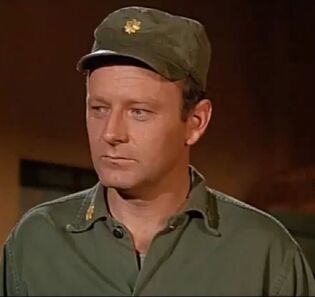 Photo: CBS Photo: CBS 11. Frank Burns (Larry Linville) Frank Burns is the character you’re supposed to hate. He’s uppity, he’s bigoted, and he’s the gung-ho military man in a setting where you see the worst of what war has to offer. But even though he’s a doctor – and as the show reminds us of time and time again, not a great one – he merely sees soldiers as a means to victory. Even though you never love Frank Burns, he’s important to the show's early years because he gives Hawkeye and Trapper John (and later B.J. Hunnicutt) a foil to play off of, a means to many punchlines. It was probably a good thing for the series that actor Larry Linville decided to leave after five seasons because it’s truly the departure of Frank Burns that gives Margaret Houlihan, his love interest, the opportunity to blossom into something more. JS by Julian Spivey The most anticipated addition to streaming this month for many is without “The Lord of the Rings: The Ringers of Power,” which is a mouthful and premieres on Amazon Prime Video tomorrow (September 2). That’s not really my scene though. Here’s what I’m most looking forward to seeing: The Good Fight (Season 6) – Paramount+ - Thursday, Sept. 8 After 13 years of being of the best characters on television, we’re going to be saying goodbye to Christine Baranski’s attorney Diane Lockhart with the final season of “The Good Fight,” Robert and Michelle King’s spinoff to their acclaimed CBS drama “The Good Wife.” “The Good Fight” has truly stood out on its own (many even think it's better than its predecessor – though I’m not sure I’m in that camp) during its run, even with an abnormally high cast turnover. I’m very interested to see how Lockhart’s story ends. SEAL Team (Season 6) – Paramount+ - Sunday, Sept. 18 “SEAL Team,” which aired its first four seasons on CBS before moving to stream on Paramount+ a few episodes into its fifth season, has been one of my favorite dramas of the last half-decade, despite the fact I didn’t expect much going into the series. I’m excited to jump back into the exciting world of Seal Team Bravo, but a little hesitant because I’m fairly certain one of my favorite characters is being killed off, likely in the season premiere. Reboot – Hulu – Tuesday, Sept. 20 I’m adding this to the list solely because of Keegan-Michael Key being one of the leads and the fact that Paul Reiser (continuing the Reinerssance) has a supporting role. The sitcom, created by “Modern Family” producer Steve Levitan, is about the cast of a fictional hit ‘00s sitcom “Step Right Up” reuniting for a reboot and having to navigate unresolved issues among other things. The supporting cast includes Judy Greer, Johnny Knoxville and Rachel Bloom. The first three episodes of the comedy drop on Tuesday, Sept. 20. Blonde – Netflix – Wednesday, Sept. 28 There’s been a lot of controversy surrounding “Blonde” for a while now, mostly revolving around its NC-17 rating, the highest of all MPAA ratings and one rarely seen these days for a film. “Blonde” is the story of Marilyn Monroe, based on Joyce Carol Oates’ 2000 novel of the same name. What worries me the most about “Blonde” is its first teaser trailer that came out a while back and I swear Ana de Armas’ natural Latina accent comes through in her attempt to portray the film icon. I’m also worried that the rating could lead the film to be exploitative. “Blonde” should at the very least be an interesting watch. Ramy – Hulu – Friday, Sept. 30
Hulu’s “Ramy,” which is producer, stars and is frequently written by comedian Ramy Youssef, was one of TV’s pleasant surprises of 2019 when it debuted. The second season, which debuted shortly after the pandemic started in 2020, was strong, but not as good as the first season, but then the entertainment world was put on hold. The third season of “Ramy” is finally coming out at the end of the month and I can’t wait to see what’s going on in the titular character’s life now. The thing I like the most about “Ramy” is it gives insight into the life of someone, a Muslim-American, you don’t often see on television (at least in a non-terrorist portrayal). |
Archives
July 2024
|
